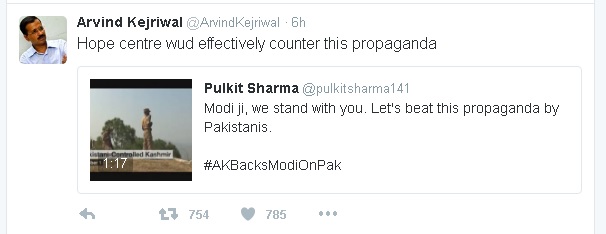The foundation of credible journalism consists of various ethics which I don’t want to discuss here. I am concerned for just one aspect that is asking the right questions to the right persons. Are the tough questions really being asked to expose the hypocrisy of so called liberals or these questions are only reserved for the particular political leanings. Just one example I want to mention –
A few months ago in the mid of JNU row, India Today Conclave invited Kanhaiya as guest with a few other young budding leaders from ABVP and NSUI. As very likely, Kanhaiya was asked to explain the JNU incident. But one particular question which caught my attention was about Afzal Guru. He was categorically asked whether he believed Afazal as terrorist and, if he was indeed, why the programme was organized to celebrate his death anniversary. His answer was on a typical communist line. He replied that Afzal was convicted by the apex court so he did respect the judgment but was against the capital punishment. He further reiterated that he would oppose each and every capital punishment irrespective of the political ideology of the convict. The instinctive counter question came in my mind whether he wanted to celebrate the death anniversary of all the convicts of capital punishment including Nathuram Godse. Why the leftist opposition to the capital punishment had remained limited to only Makbul Bhatt and Afzal Guru? Anyone can imagine how uncomfortable this could prove. But this important question wasn’t asked at all.
We, by not asking some crucial questions, not only give the hypocrites (leftists in particular) an easy escape route but also serve as a catalyst to their political as well as ideological hegemony. This kind of journalistic generosity is more towards those forces which openly challenge the cultural and political unity of our country. The worst example of this partiality is Jammu & Kashmir. No one is willing to question the basic foundation of separatism in the valley.
The very first question must be asked why the separatist sentiments are prevailed only in the valley not in Jammu and Ladakh. The history of the accession is as much same for Jammu and Ladakh as much for the valley but why only the valley is suffering from the separatist syndrome? Is religion not among the major factors? Everyone talks about a political solution of the problem but I am waiting for someone who can tell what precisely the political solution is. What the Pakistani with ISIS flags and the slogans like “KASHMIR BANEGA PAKISTAN” (Kashmir will be made Pakistan) are doing to achieve the political solution?
There are three major voices heard in the valley. First one is of the ultra separatists who insist that Kashmir should be given to Pakistan , second one of the separatists who demand for an Azad Kashmir from both India and Pakistan and the third one of the political class which demands to strengthen Article 370. The voice of ultra separatists are Pakistani so I don’t have any question for them. I want to ask those separatists who demand for freedom what their dream about independent Kashmir is. Do they want to make it an Islamic nation or a secular one? What is the composite nature of their so called freedom struggle , secular or based on Islamic ideals? Where are Hindus, Sikhs and Buddhist in their struggle? Is it a freedom movement or a religious movement? Why there was a need to drive away Pundits from the valley and what purpose did it serve?
The political class which is the most beneficiary of the constitution of India often demand more liberty under Article 370. But will it ever tell us what benefit the article serves for the betterment of the Kashmiri people? Has it helped them to generate more economic and social opportunities? They often talk about political aspirations of the people but why their political aspiration is different from that of those who live in other parts of the country? Why I as a Bihari don’t have the same political aspiration? I also want to ask those Kashmiri leaders who (pretend to) request the Pundits to return their homeland whether they are ready to punish the perpetrators of the ethnic cleansing of 1990.
We know the Muslims of the valley in spite of being in majority opted India as their country ( which, I think, wasn’t the appropriate justification of the accession) but is it the valid reason for their distinct political aspirations. Have they done a great favour to India by opting it as their country? They demand everything, more or less, on the behalf of this factor as if India has a debt to pay. Have Muslims , Dalits , Buddhists and many other sects of Indian society done something wrong by not having the same political aspirations as the people of the valley have?
Kashmir has been facing a massive unrest for last 70 days after the killing of a terrorist. Many intellectuals have raised their eyebrows over the manner in which the forces are handling the violent mob. It is well within their right to raise questions but they also should question the manner as well as the goal of the protest. If it all is not sponsored then what do the protesters want to achieve? And above all can India, the largest democracy in the world, afford to institutionalise stone pelting as a democratic way to protest?
These are some questions which need to be asked before reaching to any conclusion of the Kashmir problem. I am not the expert who know all the right answers but I hope some day I will get the right answers. Only then we will be able to find the root cause of the problem. But the biggest question-
“Are the deaf ears listening?”
























